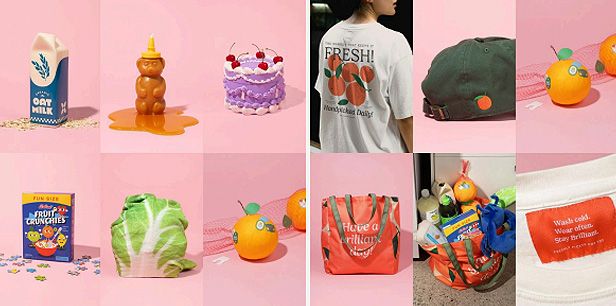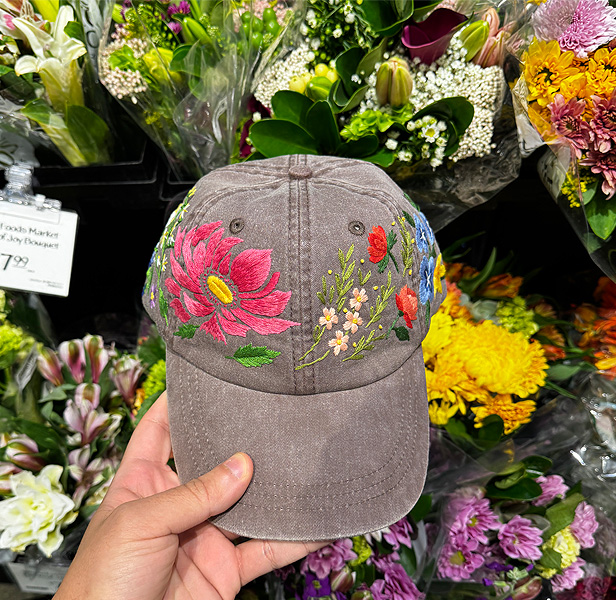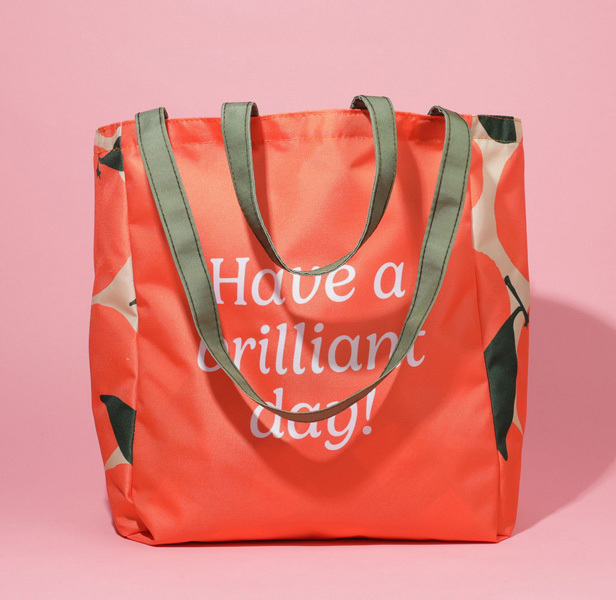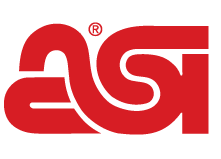Commentary April 09, 2025
Brilliant’s Fictional Grocery Store Showcases Very Real Trends in Promo
The Miami pop-up centered around a fake grocery store demonstrates how to brand a story across a variety of products.
Key Takeaways
• Intentionality in Branding: Brilliant (asi/146116) created a self-promo campaign centered around a fictional grocery store, emphasizing the importance of intentionality in branding, showcasing how subtle and thoughtful design can make promotional products feel more artisanal and desirable.
• Leveraging Current Trends: The campaign cleverly incorporates current trends and buzzwords, such as “artisanal” and “AI,” to create a unique and relevant marketing narrative that resonates with modern consumers.
• Creating Perceived Value: By blending exclusive, handcrafted items with mass-produced products, the campaign demonstrates how perceived value can be enhanced, making promotional items more appealing and iconic to end-users.
Sometimes buzzwords are used so often they start to lose their meaning. “Artisanal” is one of those. Often used to describe everything from food to crafts to cocktails, basically it just means it wasn’t mass-produced and was made by a real human being with some intention behind it.
Brilliant (asi/146116) took that idea of small-batch marketing and applied it to a self-promo in Miami called the Brilliant Grocer. It was spearheaded by Account Director Tommy Gomez, who in 2023 was named ASI Up-and-Comer Distributor of the Year, and it showcases the creativity the distributor can put into its branding initiatives.
On display in the “store” – which also includes a digital storefront for ordering products and even an accompanying curated playlist (because a grocery store without music is quite eerie) – were T-shirts, caps, candles shaped like eggs and honey bear bottles, and of course, tote bags.
As Gomez puts it, the Brilliant Grocer was meant to tell the story of how Brilliant can in turn tell their customers’ stories. The choice of the grocery store theme came from the current conversations around grocery prices – something that even Gomez and his team might not have predicted would be as dire when they started the fun project.
“When we were thinking about the themes, we were like, ‘Well, what’s top of the news right now?’ And, obviously, the term groceries and inflation and the cost of that was pretty high on the list,” Gomez says. “We just decided to bring a little levity to the situation.”

A collection of products for the Brilliant Grocer campaign from Brilliant (asi/146116).
There’s a fine line that brands have to walk between levity and tone-deafness, and the campaign from Grocer certainly does. The product design shows how distributors and product designers can take things that are traditional giveaways and marketing pieces and turn them into branded pieces that people want to wear for their fashion, rather than advertising power.
“Something you’ll notice is a lot of the products don’t have blatant branding,” he says. “We didn’t just lead with putting the Brilliant logo on things. In this fictitious world, the grocery store is called Brilliant. Because grocery stores inherently have products in them that are all branded – like when you get a carton of eggs – we just embed our logo into it. If you zoom in on the actual egg carton, the Brilliant brand is there, but it looks like it’s farm-fresh egg brand that’s Brilliant.”
Gomez compares the layering quality and call for subtlety to storytelling in fiction, like the hit HBO show The White Lotus. And through that lens, Gomez is playing the role of Mike White for being able to pull from the current state of pop culture and consumer trends and reflect it back at his potential buyers.
One of those trends and buzzwords is AI, which has swept just about every conceivable industry. It was purposeful for Gomez and Brilliant to call what they did with their products “Artisanal Intelligence,” hitting two topics with one phrase.
So, how does one make their promotional product appear “artisanal” at a time when end-users want something that feels tailor-made for them, rather than mass-produced and blasted to everyone?
“There’s one of two routes you can take when you are designing something at scale,” Gomez says. “Either find the supplier or a brand that’s very trendy, an Owala for example, and try to get them to create something in a colorway that’s unique to you. So there’s that element of exclusivity.”
The other way, he says, is to find an artist to collaborate with on a wholly original piece that can be mass-produced. That, or just select a few things and make them available in smaller quantities.
For example, the hats for the Brilliant Grocer campaign were made from an embroiderer in Ukraine who hand-stitches her wares.

The Floral Dept. Cap was hand-embroidered in Ukraine by KAZKOVA Embroidery.
“That artist in Ukraine wouldn’t be able to produce an abundance of them,” Gomez says. “But, by sheer association, including that in the collection and sitting it next to the cereal box that we have thousands of units in, it just gives it that little bit of a garnish that makes it feel artisanal.”
It’s about the perception. And nowhere is the perception of value better demonstrated than through the grocery store tote bag, which can be worth its carrying capacity in gold. Look no further than the Trader Joe’s tote bag, which retailed for just a few dollars but popped up on resale sites and almost caused riots in grocery stores.
So, when creating a campaign that mimicked what an actual modern grocery store concerned with attracting a certain clientele would stock or give away, tote bags were a no-brainer. But what is it about the bags at Trader Joe’s or Erewhon that resonate in people so deeply, and how did Brilliant hope to recreate it for this campaign and down the road for future clients?

The Market Tote from Brilliant (asi/146116).
Gomez says it often just comes down to loyal customers already liking your brand enough to want to show the name off in public and giving off an air that the bag is an it-bag to have. Eventually, the prophecy self-fulfills.
“I think sometimes we think of promo products as just giveaways, but we fail to realize that, if you just stick to one product like a tote for example, you could still play off of that and make it truly iconic,” he says. “The example of that is The New Yorker. They have that tote. At one point, one writer described The New Yorker as a tote company that happens to have a magazine. That tote has a cult following. I could tell that the tote from Trader Joe’s was very intentionally picked, and the design was very intentionally applied – it’s not just slapping a logo on something. And I think that makes the difference.”
The lesson for distributors looking to take these ideas and craft their own artisanal promotional campaigns is to approach everything with intentionality and consider how each fine detail creates the larger advertising picture. As Gomez says, it’s not as simple as slapping a logo onto a product. In fact, that often detracts from it, as young end-users can smell a marketing shill from a mile away.
Because while Gomez and Brilliant flaunt their “Artisanal Intelligence,” modern end-users certainly have “Authenticity Intelligence.”

